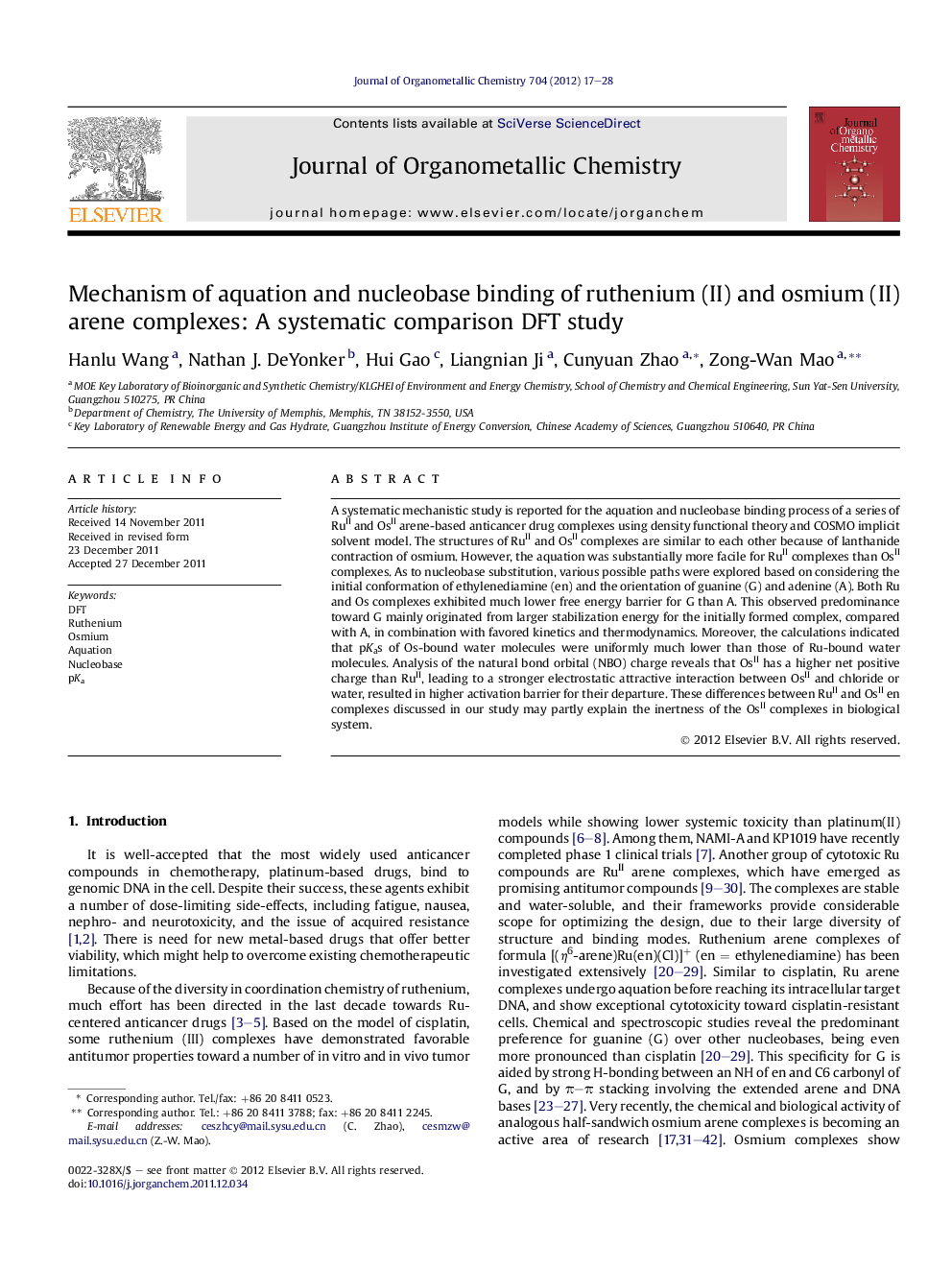| Article ID | Journal | Published Year | Pages | File Type |
|---|---|---|---|---|
| 1326306 | Journal of Organometallic Chemistry | 2012 | 12 Pages |
A systematic mechanistic study is reported for the aquation and nucleobase binding process of a series of RuII and OsII arene-based anticancer drug complexes using density functional theory and COSMO implicit solvent model. The structures of RuII and OsII complexes are similar to each other because of lanthanide contraction of osmium. However, the aquation was substantially more facile for RuII complexes than OsII complexes. As to nucleobase substitution, various possible paths were explored based on considering the initial conformation of ethylenediamine (en) and the orientation of guanine (G) and adenine (A). Both Ru and Os complexes exhibited much lower free energy barrier for G than A. This observed predominance toward G mainly originated from larger stabilization energy for the initially formed complex, compared with A, in combination with favored kinetics and thermodynamics. Moreover, the calculations indicated that pKas of Os-bound water molecules were uniformly much lower than those of Ru-bound water molecules. Analysis of the natural bond orbital (NBO) charge reveals that OsII has a higher net positive charge than RuII, leading to a stronger electrostatic attractive interaction between OsII and chloride or water, resulted in higher activation barrier for their departure. These differences between RuII and OsII en complexes discussed in our study may partly explain the inertness of the OsII complexes in biological system.
Graphical abstractA systematic mechanistic study was reported for the aquation and nucleobase binding process of a series of RuII and OsII arene-based anticancer drug complexes using density functional theory and COSMO implicit solvent model.Figure optionsDownload full-size imageDownload as PowerPoint slideHighlights► The aquation was more facile for RuII complexes than OsII complexes. ► Both Ru and Os complexes showed prominent selectivity of guanine over adenine. ► pKas of Os-bound water molecules were lower than those of Ru-bound water molecules.
